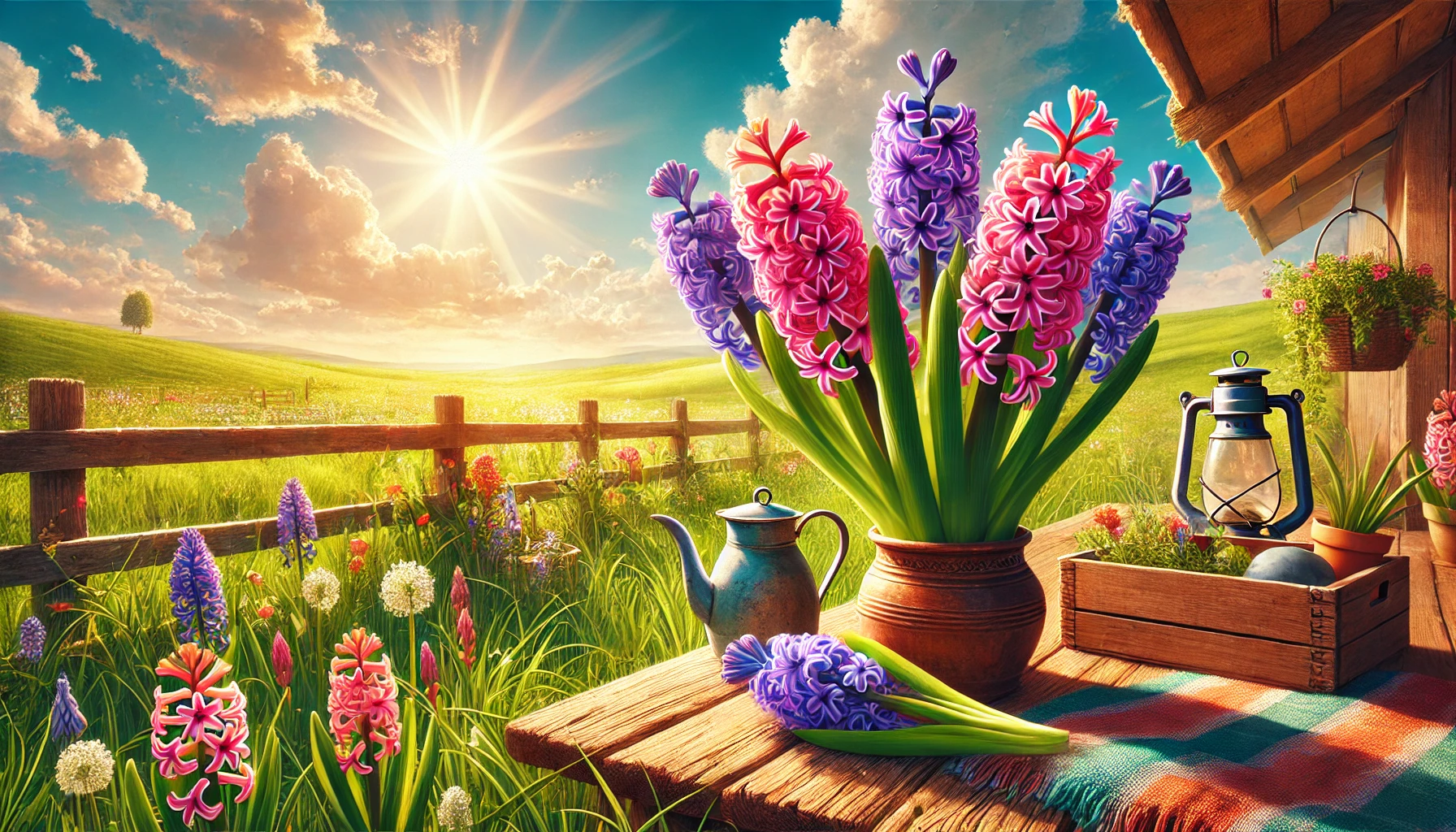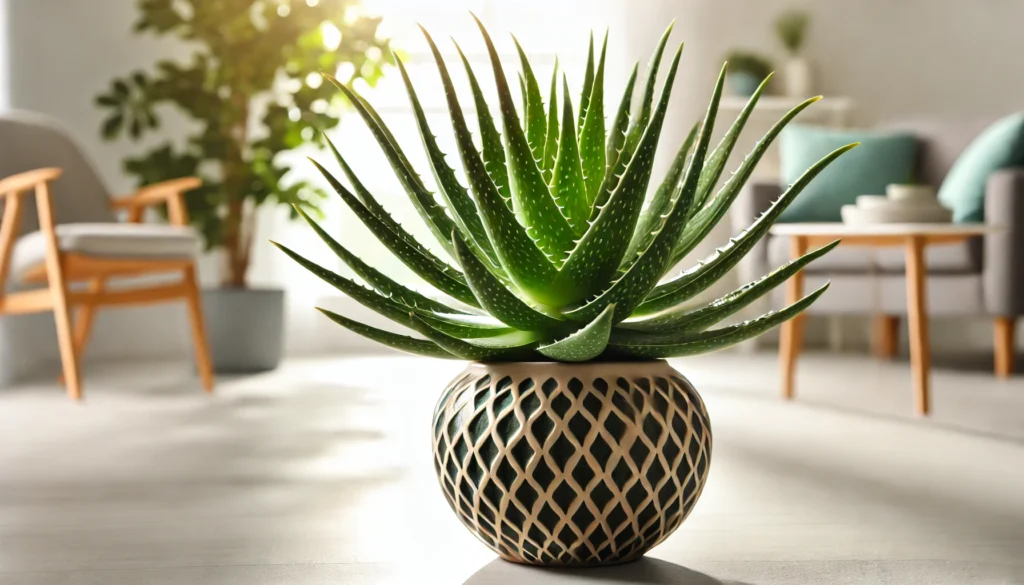
The Hyacinth (Hyacinthus orientalis) is a captivating plant known for its vibrant clusters of flowers and sweet fragrance. This perennial bulb is a popular choice for gardeners and indoor plant enthusiasts alike. Hyacinths can grow up to 10-12 inches (25-30 cm) tall, making them a perfect addition to garden beds, borders, and even as potted plants indoors.
History and Ideal Growing Conditions
Hyacinths have a rich history dating back to ancient Greece, where they were highly valued for their beauty and fragrance. Native to the eastern Mediterranean region, these plants were often associated with the myth of Hyacinthus, a young boy loved by the gods Apollo and Zephyrus. Today, hyacinths are celebrated worldwide for their stunning spring blooms.
To thrive, hyacinths require well-draining soil and full to partial sunlight. They are hardy in USDA zones 3-9 and prefer cooler temperatures, making them ideal for spring gardens. Plant hyacinth bulbs in the fall, about 4 inches (10 cm) deep and 3 inches (8 cm) apart, in a location that receives at least 6 hours of sunlight daily.
Toxicity and Pets
While hyacinths are beautiful, they are unfortunately toxic to pets. All parts of the plant, especially the bulbs, contain oxalic acid, which can cause severe reactions if ingested by cats, dogs, or other pets. Symptoms may include drooling, vomiting, diarrhea, and in severe cases, difficulty breathing.
Safe Alternatives: If you’re concerned about your pets, consider planting safe alternatives like African Violets (Saintpaulia), Boston Ferns (Nephrolepis exaltata), or Spider Plants (Chlorophytum comosum). These plants are non-toxic to pets and can provide a similar aesthetic appeal.
Best Practices for Caring for Hyacinths
Caring for hyacinths is relatively straightforward, but following best practices ensures they remain healthy and vibrant throughout their growing season.
Watering and Humidity: Water hyacinths regularly, especially during their active growing season in spring. However, avoid overwatering, as they are susceptible to bulb rot. The soil should be kept moist but not soggy. Hyacinths prefer moderate humidity levels, so there’s no need to mist them.
Soil, Light, and Temperature: Hyacinths thrive in well-draining soil with a neutral to slightly acidic pH (6.0-7.0). They require full to partial sunlight, ideally 6 hours of direct sunlight daily. Temperatures between 60-70°F (15-21°C) are ideal for their growth. If grown indoors, place them near a bright window.
Fertilizing: Hyacinths benefit from a balanced fertilizer applied in early spring as the bulbs begin to sprout. A slow-release granular fertilizer or a diluted liquid fertilizer works well. Avoid over-fertilizing, as this can lead to weak blooms and excessive foliage.
Common Problems and Remedies
Hyacinths are generally hardy, but they can face issues like bulb rot, pests, and poor blooming.
- Bulb Rot: This is usually caused by overwatering or poorly draining soil. Ensure the soil drains well and avoid waterlogging the bulbs.
- Pests: Aphids and spider mites can occasionally infest hyacinths. Regularly inspect the plants and treat infestations with insecticidal soap or neem oil.
- Poor Blooming: If your hyacinths are not blooming well, it could be due to insufficient sunlight or depleted soil nutrients. Ensure they receive enough light and fertilize them appropriately.
Pruning and Maintenance
Pruning hyacinths is an essential part of maintaining their health and appearance. While they don’t require heavy pruning, some light maintenance can go a long way.
Tools Needed: Use clean, sharp pruning shears for trimming hyacinths. It’s crucial to sanitize the tools before and after pruning to prevent the spread of disease.
Identify Areas to Trim: Focus on removing spent flowers and any damaged or diseased leaves. Trim the flower stalks down to the base once they have finished blooming to encourage energy back into the bulb.
Deadheading: Remove faded flowers promptly. This process, known as deadheading, helps prevent the plant from expending energy on seed production, allowing it to store energy in the bulb for the next season.
Prune Leggy Growth: If your hyacinths become leggy, trim back the foliage to maintain a compact shape. This also helps improve airflow around the plant.
Remove Damaged or Diseased Leaves: Regularly check for and remove any leaves that show signs of disease or damage. This prevents the spread of disease and keeps the plant looking its best.
Shape the Plant: While shaping is not typically necessary for hyacinths, you can trim excess foliage to maintain a tidy appearance.
Post-Pruning Care: After pruning, water the hyacinths lightly and apply a layer of mulch to retain moisture and regulate soil temperature.
Propagation and Benefits
Propagating hyacinths is a rewarding process that allows you to enjoy these beautiful flowers year after year. The most common method is by dividing the bulbs in the fall. Dig up the bulbs after the foliage has died back and separate the offsets (small bulbs) from the parent bulb. Replant the bulbs in a suitable location, and with proper care, they will bloom the following spring.
Hyacinths are not only beautiful but also beneficial for pollinators. Their fragrant flowers attract bees and butterflies, contributing to a healthy garden ecosystem.
Final Thoughts
Hyacinths are a stunning addition to any garden or home, offering vibrant colors and a delightful fragrance. With proper care, they can thrive for many years, providing a splash of color each spring. Remember to consider your pets when planting hyacinths, and opt for safe alternatives if necessary. By following the tips in this guide, you’ll be well on your way to enjoying the beauty of hyacinths in your own space.
Stay connected with the world of plants! Subscribe to Phylofy for expert gardening tips, DIY projects, and eco-friendly inspiration. Join our community and nurture your love for nature. Don’t miss exclusive content and updates. Subscribe now!



